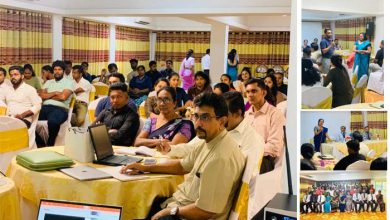EDB facilitates continuous operations of exporters in curfew areas

Consequent to several areas of the country coming under quarantine curfew, the Sri Lanka Export Development Board (EDB) is providing facilitation to ensure that the operations of non-BOI, export industries located in curfew areas function without interruptions subject to the guidelines issued by the Ministry of Health.
The EDB is providing recommendations to enable export companies, which are located in curfew-imposed areas, to obtain curfew passes from respective police stations so that employees who reside outside curfew areas can engage in work in their factories.
However, employees residing in Gampaha, Minuwangoda, Veyangoda, Divulapitiya and Meerigama curfew areas will not be permitted to come to work and the factories could continue operations only with employees residing in non-curfew areas. Employees outside the quarantine curfew areas can be transported to the factories with necessary permissions to ensure the continuity of essential export-related activities.Companies should take all precautions not to expose employees outside the quarantine curfew areas to the residents of the areas mentioned above.
The relevant information and specimen applications for requesting curfew passes could be obtained from the following contacts of the EDB:
For Agriculture and Fisheries Sector: Ms. Malani Baddegamage, Director – Export Agriculture,
Email: malani@edb.gov.lk
For Industrial Products Sector: Mr. Harsha Pathberiya, Actg. Director – Industrial Products,
Email: hdp@edb.gov.lk
For Export Services & Electronic Products Sectors: Ms. Manoja Dissanayake, Actg. Director – Export ServicesEmail: manojad@edb.gov.lk
The EDB has instructed export establishments in the said areas to take all safety precautions recommended by the health authorities to manage Covid-19. Further, they have been informed to implement safety measures as per the “Guidelines on COVID-19, Preparedness for Workplaces”, issued by the Ministry of Health and carryout random PCR tests (1% everyday) in the factories, and the results of such tests should be reported to the relevant authorities regularly.
More information on this regard could be obtained from the EDB Helpdesk on 2300710 and Email: helpdesk@edb.gov.lk and the EDB website www.srilankabusiness.com.






